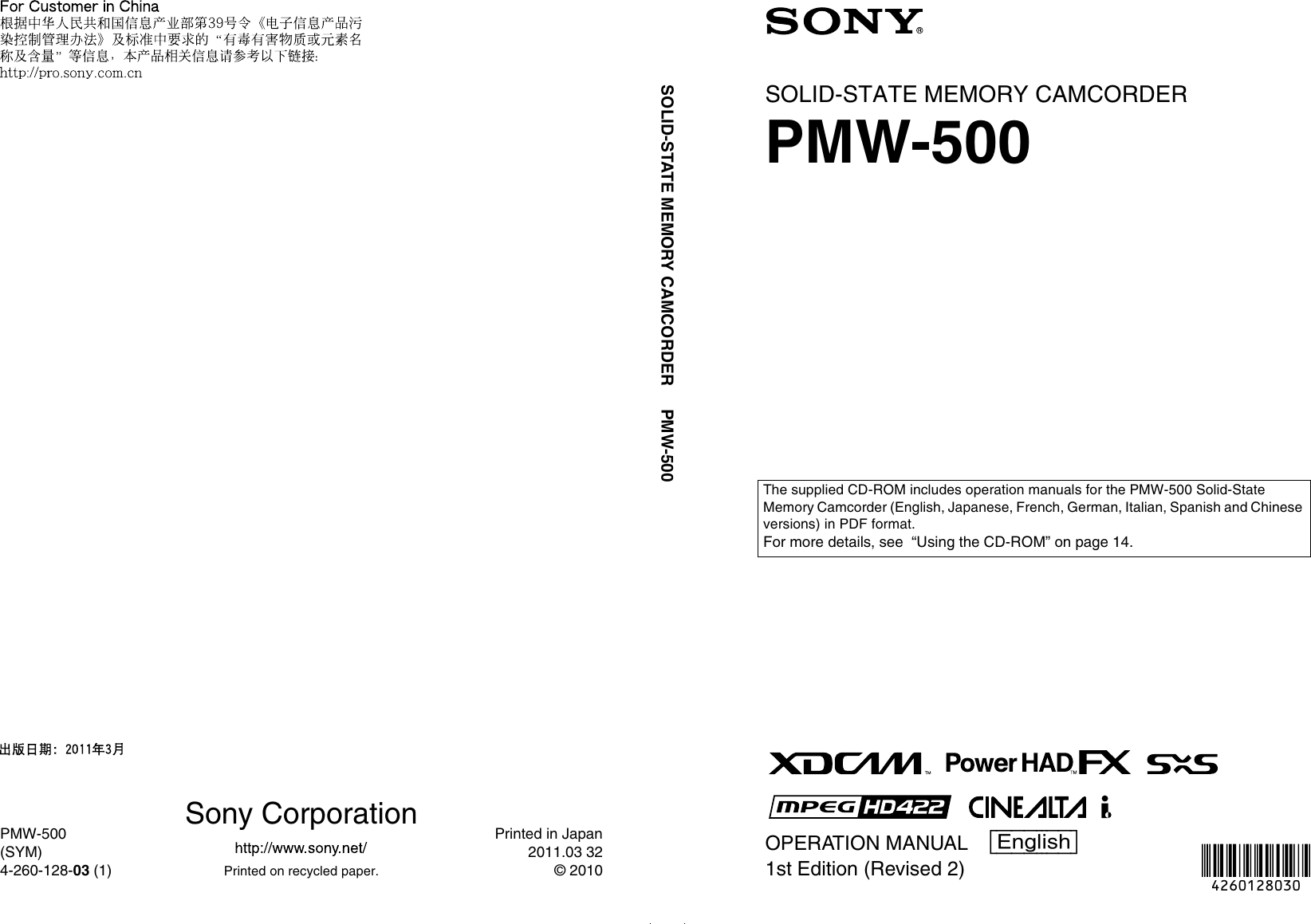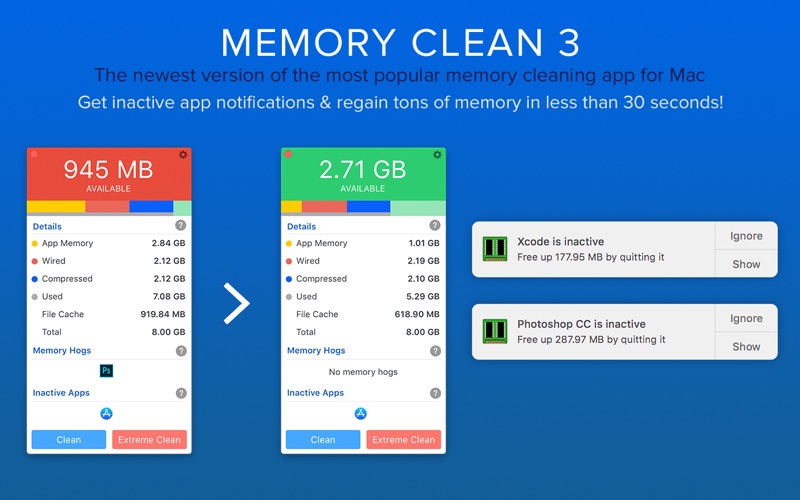

- #MEMORY CLEAN 3 1.0.2 HOW TO#
- #MEMORY CLEAN 3 1.0.2 CODE#
- #MEMORY CLEAN 3 1.0.2 SERIES#
- #MEMORY CLEAN 3 1.0.2 FREE#
A disk operation is scheduled to bring in the necessary page from disk.

#MEMORY CLEAN 3 1.0.2 FREE#
A free frame is located, possibly from a free-frame list. If the reference was invalid, the process is terminated.  The memory address requested is first checked, to make sure it was a valid memory request.
The memory address requested is first checked, to make sure it was a valid memory request. #MEMORY CLEAN 3 1.0.2 SERIES#
On the other hand, if a page is needed that was not originally loaded up, then a page fault trap is generated, which must be handled in a series of steps:. If the process only ever accesses pages that are loaded in memory ( memory resident pages ), then the process runs exactly as if all the pages were loaded in to memory.įigure 9.5 - Page table when some pages are not in main memory. ( The rest of the page table entry may either be blank or contain information about where to find the swapped-out page on the hard drive. ) Pages that are not loaded into memory are marked as invalid in the page table, using the invalid bit.  The basic idea behind paging is that when a process is swapped in, the pager only loads into memory those pages that it expects the process to need ( right away. ). ) This is termed a lazy swapper, although a pager is a more accurate term.įigure 9.4 - Transfer of a paged memory to contiguous disk space 9.2.1 Basic Concepts Rather they are swapped in only when the process needs them. The basic idea behind demand paging is that when a process is swapped in, its pages are not swapped in all at once. Process pages can be shared during a fork( ) system call, eliminating the need to copy all of the pages of the original ( parent ) process.įigure 9.3 - Shared library using virtual memory 9.2 Demand Paging. Processes can also share virtual memory by mapping the same block of memory to more than one process. System libraries can be shared by mapping them into the virtual address space of more than one process. Virtual memory also allows the sharing of files and memory by multiple processes, with several benefits:. Note that the address space shown in Figure 9.2 is sparse - A great hole in the middle of the address space is never used, unless the stack and/or the heap grow to fill the hole. The actual physical layout is controlled by the process's page table. Figure 9.2 shows virtual address space, which is the programmers logical view of process memory storage. Figure 9.1 shows the general layout of virtual memory, which can be much larger than physical memory:įigure 9.1 - Diagram showing virtual memory that is larger than physical memory. Less I/O is needed for swapping processes in and out of RAM, speeding things up. Because each process is only using a fraction of their total address space, there is more memory left for other programs, improving CPU utilization and system throughput. Programs could be written for a much larger address space ( virtual memory space ) than physically exists on the computer. The ability to load only the portions of processes that were actually needed ( and only when they were needed ) has several benefits:. Certain features of certain programs are rarely used, such as the routine to balance the federal budget. Arrays are often over-sized for worst-case scenarios, and only a small fraction of the arrays are actually used in practice.
The basic idea behind paging is that when a process is swapped in, the pager only loads into memory those pages that it expects the process to need ( right away. ). ) This is termed a lazy swapper, although a pager is a more accurate term.įigure 9.4 - Transfer of a paged memory to contiguous disk space 9.2.1 Basic Concepts Rather they are swapped in only when the process needs them. The basic idea behind demand paging is that when a process is swapped in, its pages are not swapped in all at once. Process pages can be shared during a fork( ) system call, eliminating the need to copy all of the pages of the original ( parent ) process.įigure 9.3 - Shared library using virtual memory 9.2 Demand Paging. Processes can also share virtual memory by mapping the same block of memory to more than one process. System libraries can be shared by mapping them into the virtual address space of more than one process. Virtual memory also allows the sharing of files and memory by multiple processes, with several benefits:. Note that the address space shown in Figure 9.2 is sparse - A great hole in the middle of the address space is never used, unless the stack and/or the heap grow to fill the hole. The actual physical layout is controlled by the process's page table. Figure 9.2 shows virtual address space, which is the programmers logical view of process memory storage. Figure 9.1 shows the general layout of virtual memory, which can be much larger than physical memory:įigure 9.1 - Diagram showing virtual memory that is larger than physical memory. Less I/O is needed for swapping processes in and out of RAM, speeding things up. Because each process is only using a fraction of their total address space, there is more memory left for other programs, improving CPU utilization and system throughput. Programs could be written for a much larger address space ( virtual memory space ) than physically exists on the computer. The ability to load only the portions of processes that were actually needed ( and only when they were needed ) has several benefits:. Certain features of certain programs are rarely used, such as the routine to balance the federal budget. Arrays are often over-sized for worst-case scenarios, and only a small fraction of the arrays are actually used in practice. #MEMORY CLEAN 3 1.0.2 CODE#
Error handling code is not needed unless that specific error occurs, some of which are quite rare. In practice, most real processes do not need all their pages, or at least not all at once, for several reasons:. However the entire process still had to be stored in memory somewhere. #MEMORY CLEAN 3 1.0.2 HOW TO#
Preceding sections talked about how to avoid memory fragmentation by breaking process memory requirements down into smaller bites ( pages ), and storing the pages non-contiguously in memory.Abraham Silberschatz, Greg Gagne, and Peter Baer Galvin, "Operating System Concepts, Ninth Edition ", Chapter 9.








 0 kommentar(er)
0 kommentar(er)
